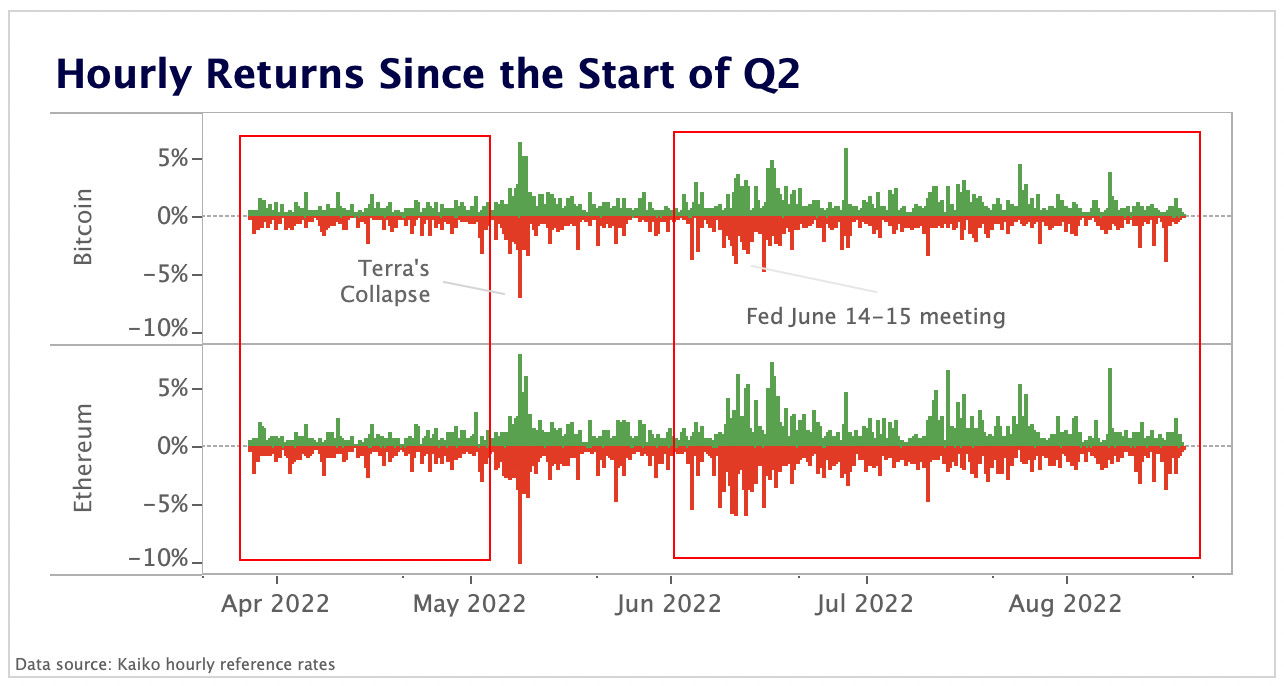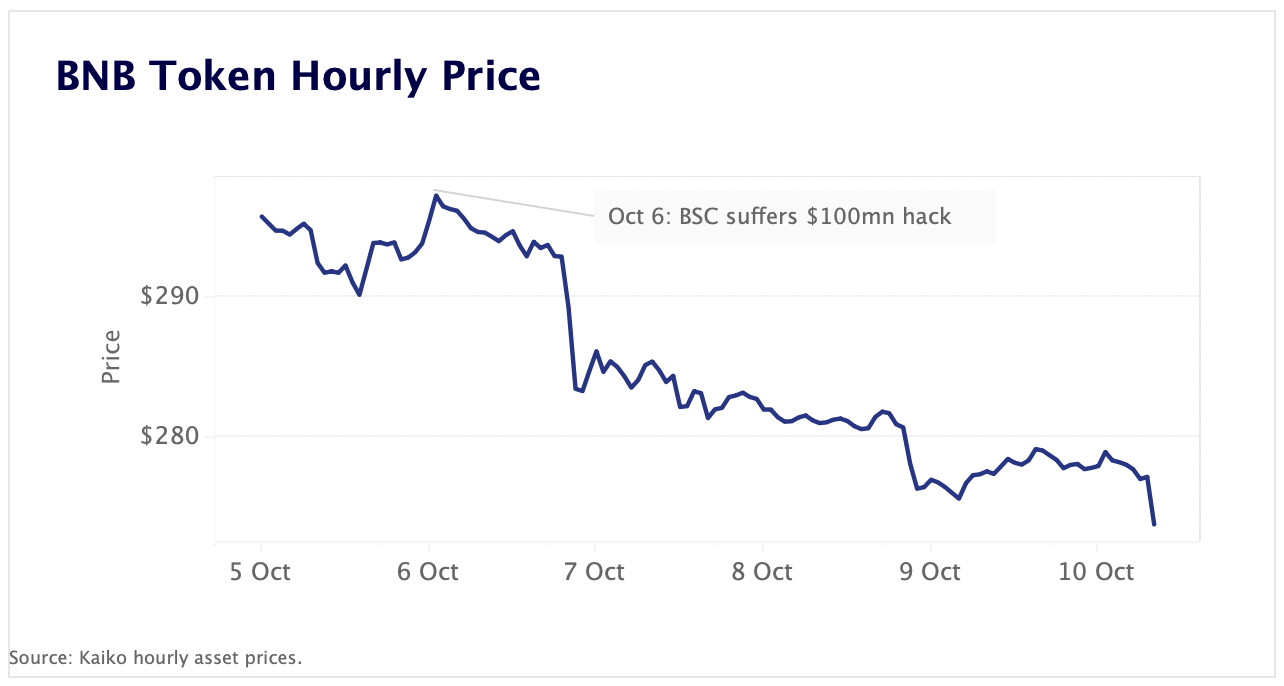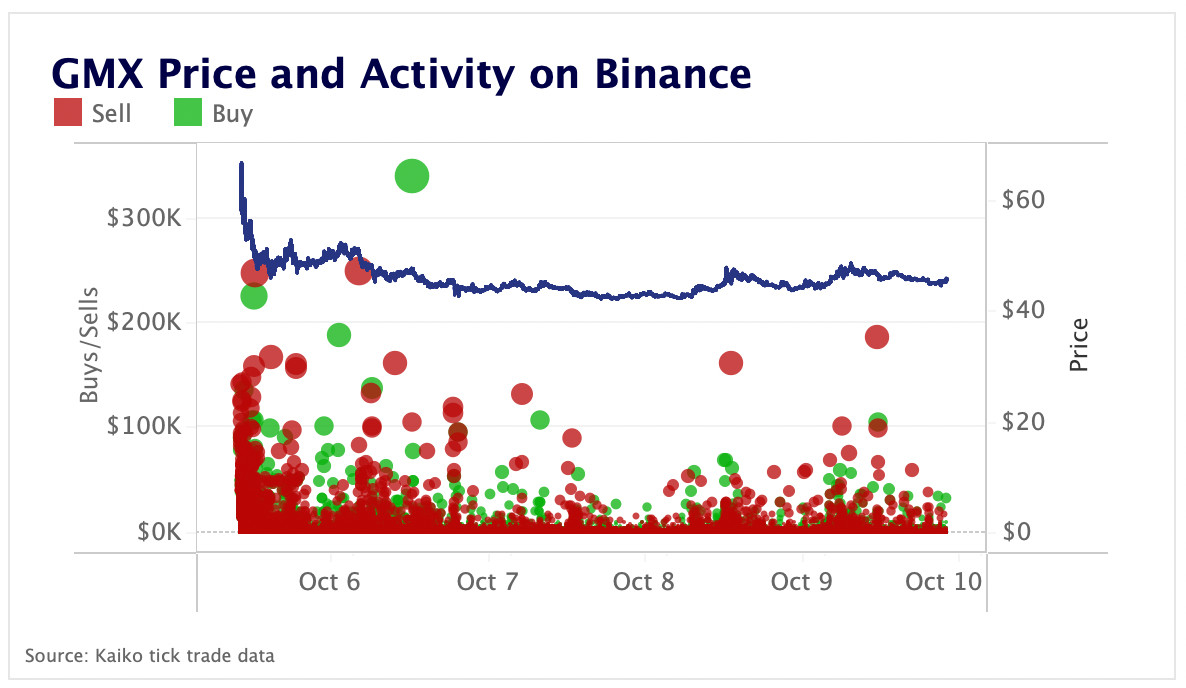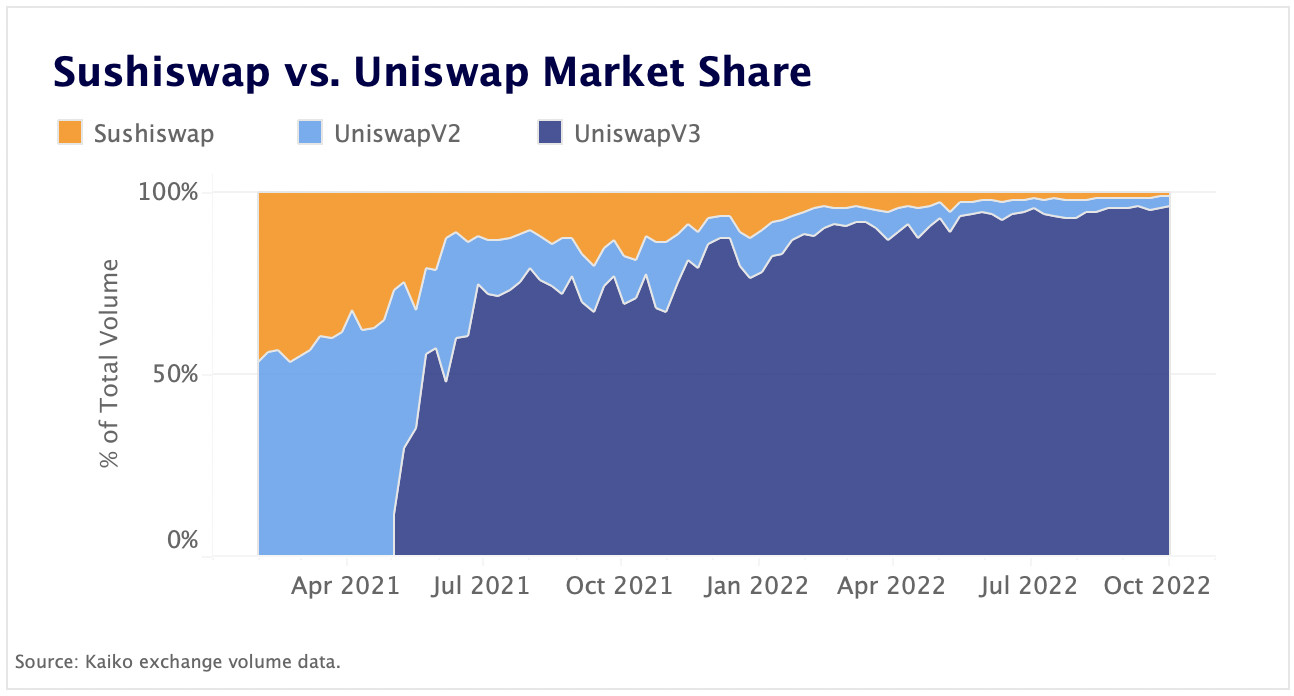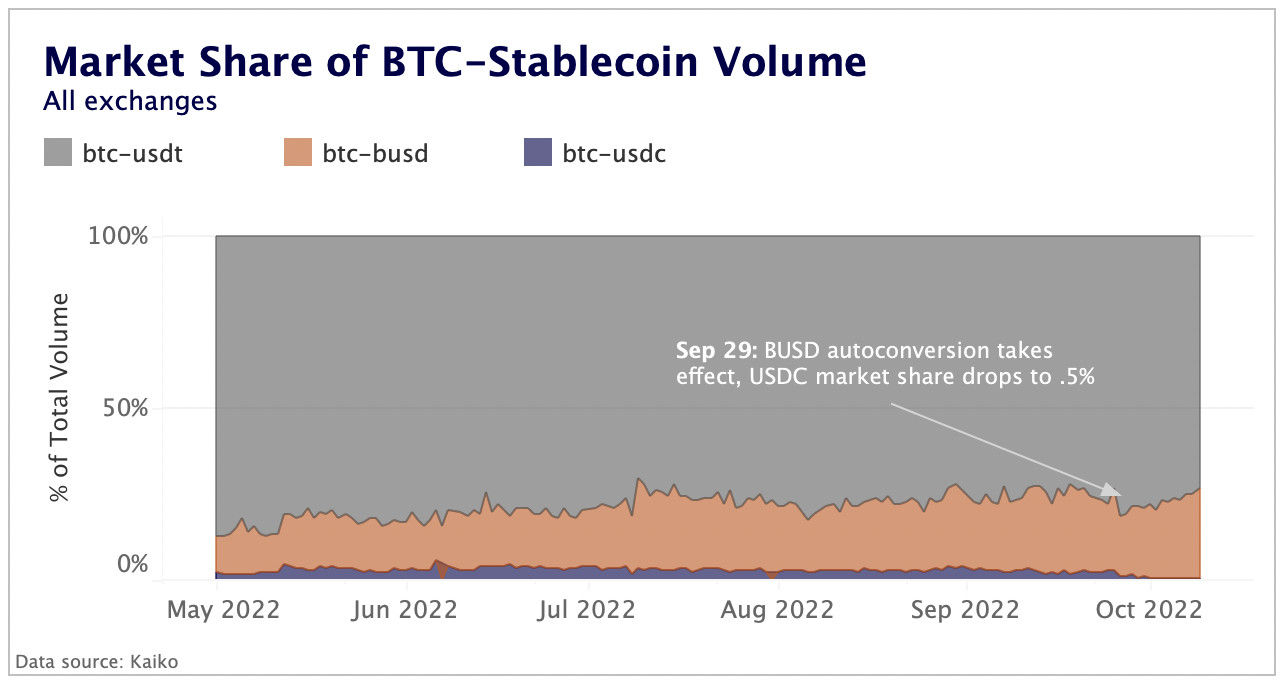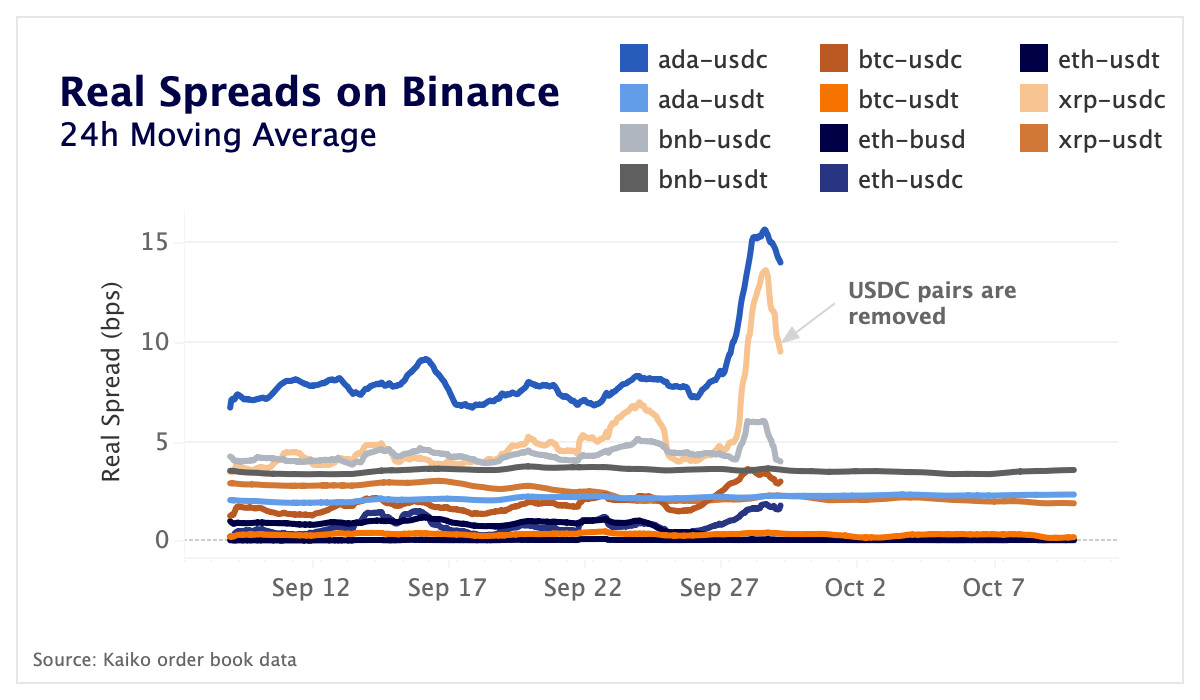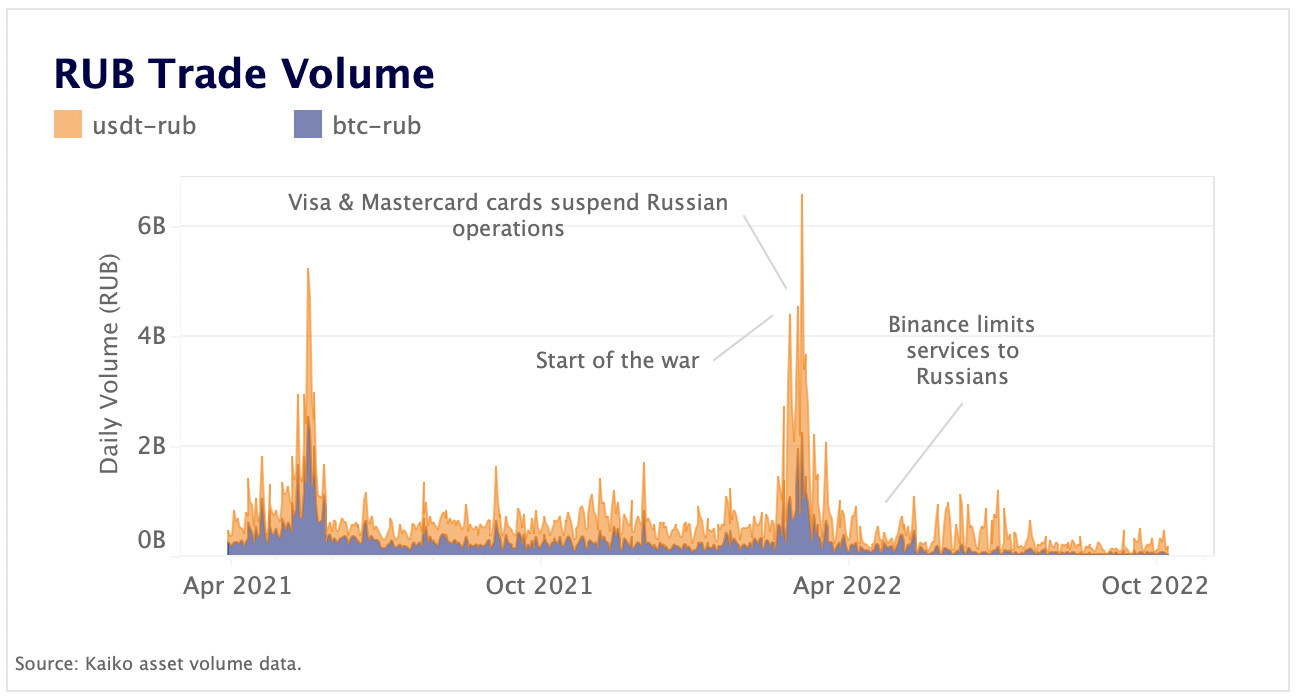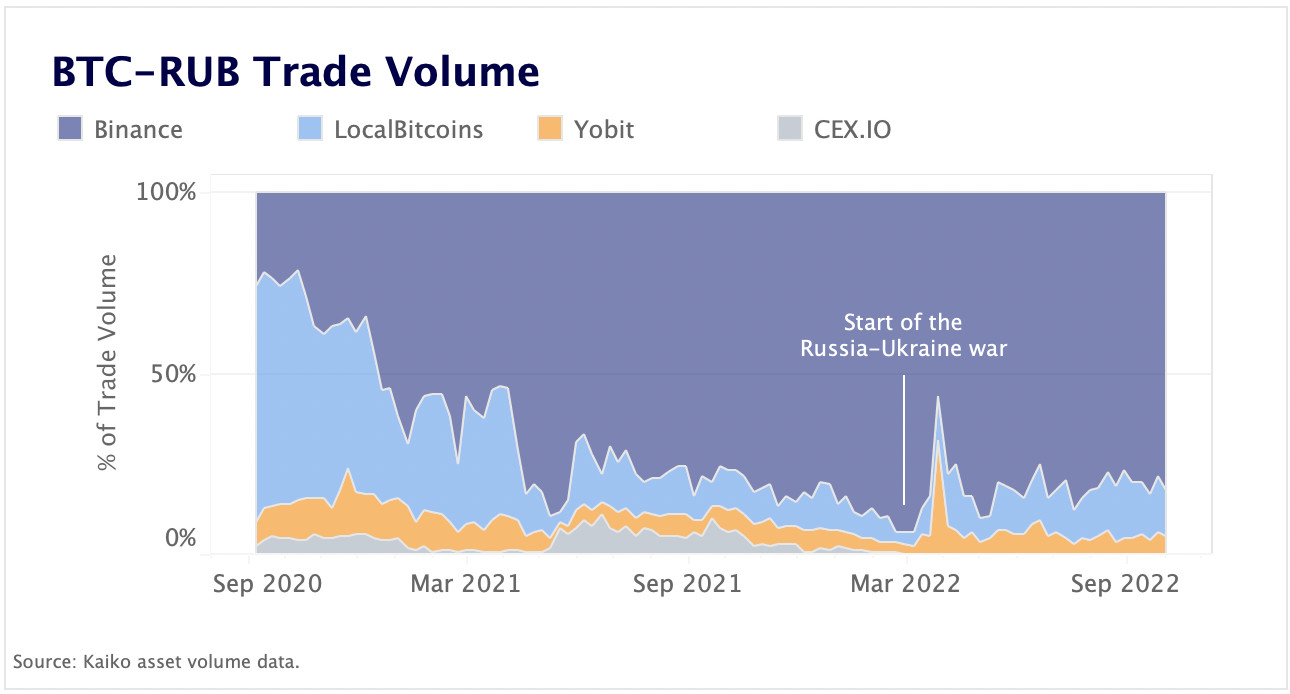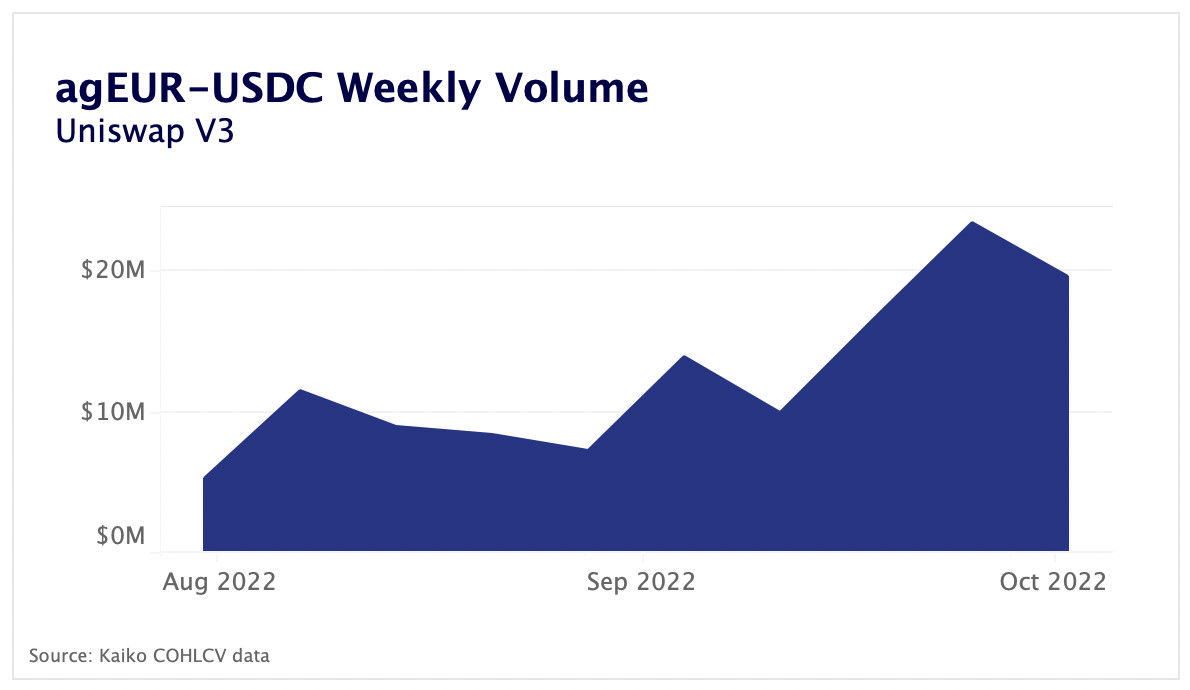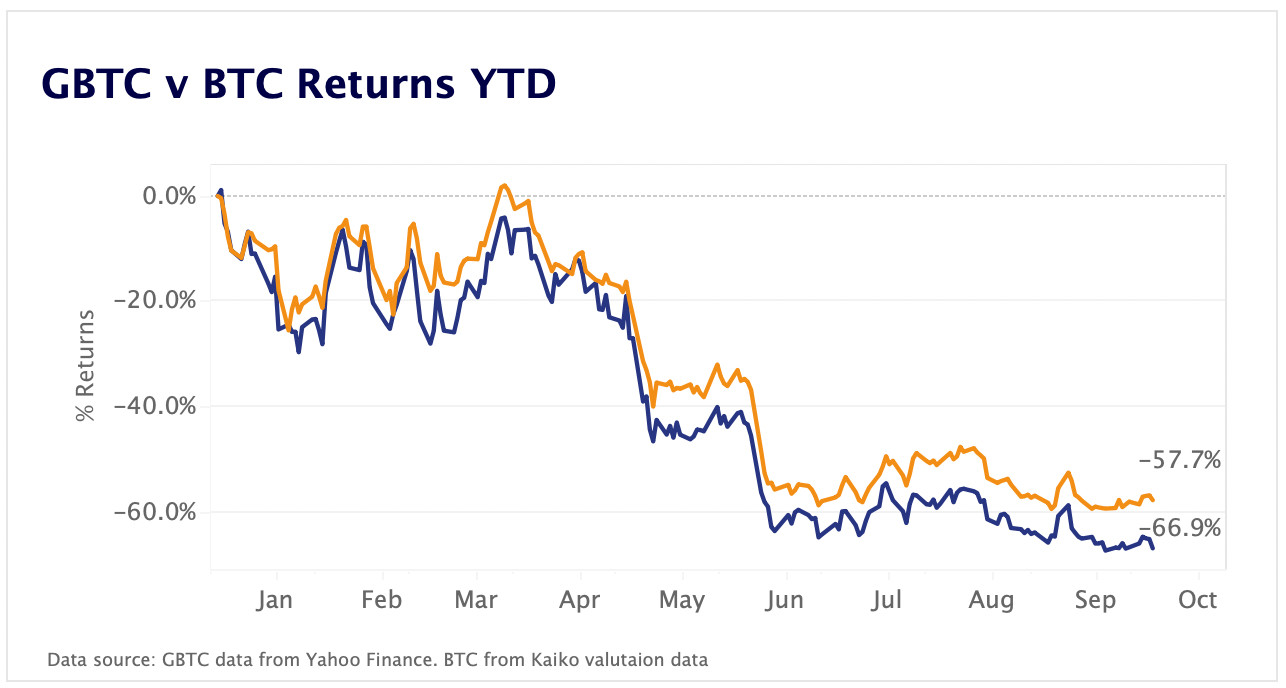A summarizing review of what has been happening at the crypto markets of the past week. A look at trending sectors, liquidity, volatility, spreads and more. The weekly report in cooperation with market data provider Kaiko.
The last 7 days in cryptocurrency markets:
- Price Movements: BNB, the native token of Binance Smart Chain, is down 8% following a $100mn hack.
- Market Liquidity: Sushiswap's market share vs. Uniswap hit all time lows of just 1% in September as new Head Chef takes over.
- Derivatives: Open interest on Binance has surged to all time highs, although funding rates remain firmly neutral.
- Macro Trends: The GBTC discount widened to 36%, with the fund's share price now underperforming BTC by 9% YTD.
Crypto markets enter low-volatility regime
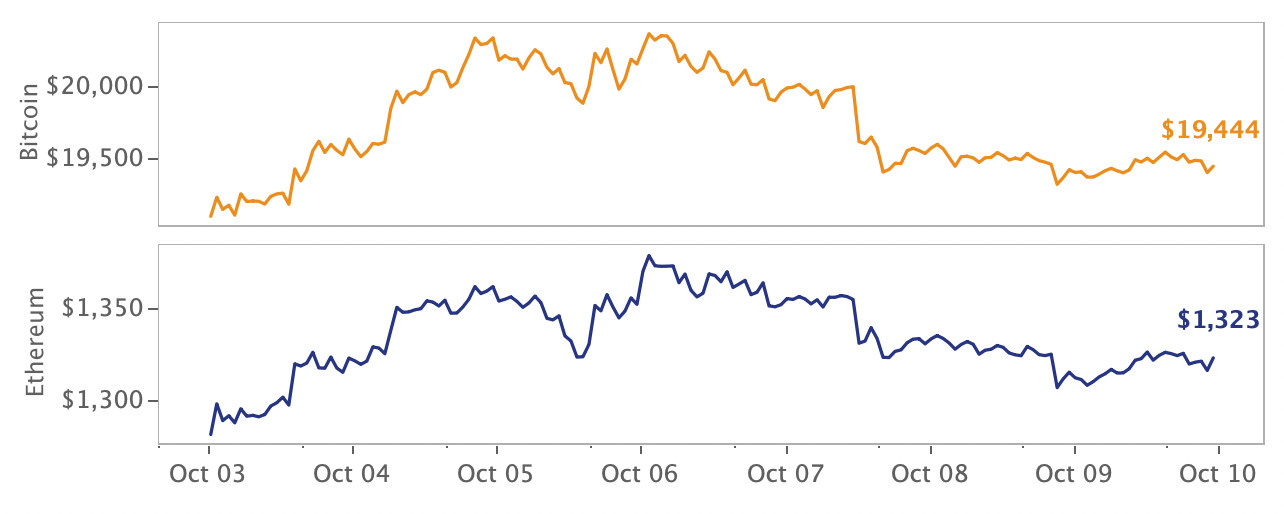
This is now the 4th week in a row that Bitcoin has closed Sunday night inside the $19k price level. Within that time span, Ethereum Merged, the S&P 500 dropped to 2021 lows, the Fed raised interest rates 75 bps, the Dollar surged to multi-decade highs, and the crypto industry suffered two massive hacks. Through all these potential price catalysts (both up and down), Bitcoin (BTC) has barely budged, with 30D volatility dropping 10 points throughout September. Crypto's uncharacteristically low volatility is a significant contrast to what traditional markets are currently experiencing, with BTC largely bucking the risk-off sell-off, although its correlation with the S&P 500 remains strongly positive.
The current high volatility market regime we've been in since June's market collapse seems to be winding down when looking at hourly returns. Both Bitcoin and Ethereum (ETH) saw hourly returns spike during the crypto credit crisis between +/-3-5%, but they have since reverted to around +/-1-2%.
In other crypto industry news, Fidelity launched an ETH index fund, Celsius revealed thousand of its customer's transactions in a public court filing, and the SEC fined Kim Kardashian $1.26mn for promoting an unregistered security.
BNB token down 8% after $100mn BSC hack
Last Friday, Binance Smart Chain (BSC), the blockchain network run by the cryptocurrency exchange Binance, suffered an estimated $100mn hack due to an exploited cross-chain bridge. The exploit threatened ~$600mn in funds before the chain’s validators temporarily suspended operations, which contained the damage at the expense of decentralization. The stolen funds were reportedly bridged to multiple other chains and used as collateral to borrow tokens.
While Binance Coin (BNB) initially showed resilience losing only 5% in the hours after the hack was announced, its decline has deepened over the weekend. As of Monday morning, BNB is down 8% since Oct 6th to around $273.
GMX soars then plummets following listing on Binance
GMX, the token for the decentralized futures exchange available on the networks Arbitrum and Avalanche, was listed on Binance and FTX last week. Prior to the listings, GMX was primarily traded on the DEXs Uniswap (Arbitrum) and Trader Joe (Avalanche) and was not available on any top tier exchanges. GMX’s price surged on the news, though the gains didn't last long, which is common price behavior for new token listings.
Binance began trading at 10am UTC on October 5, with FTX beginning trading 4 hours later. The price on Binance initially traded at highs of $67, before collapsing to pre-announcement levels. Interestingly, this exchange-specific volatility speaks to the importance of oracles like Chainlink, which the GMX exchange relies upon.
For example, any DeFi protocol that was using a direct price feed from Binance could have experienced large liquidations based on a price that was not reflective of the overall market, as the price on Uniswap V3 never went above $64. Since the beginning of trading, total volume of sells has outpaced buys 55% to 45%.
Sushiswap's new Head Chef has work to do as market share vs. Uniswap hits all time low
Last week, Sushiswap governance voted overwhelmingly to elect Jared Grey, the former CEO of a centralized crypto exchange, as its Head Chef (essentially CEO). Three wallets were responsible for 9.3mn of the 11mn SUSHI votes in his favor; the two largest wallets belonged to VC firms GoldenTree and Cumberland. In his proposal, Grey said that he would focus on consulting with legal to establish a compliant DAO entity, increase liquidity with new technology integrations and products, and explore a venture capital arm, similar to Uniswap Labs. On the news, SUSHI’s price surged while UNI was flat.
Grey inherits a difficult position in which Sushiswap has lost considerable market share to Uniswap V3 and recent product additions have largely fallen flat. Since the start of 2022, Sushiswap's market share vs. Uniswap (V2+V3) has dropped from 10% to 1%.
Additionally, regulatory concerns are increasing for DEXs; following Grey’s election, Sushiswap’s legal counsel, Fenwick & West LLP, released a proposal to establish an official legal structure. Grey has expressed support for this proposal and it appears to have general support from the community, though discussions are ongoing.
BUSD auto-conversion takes effect, slashing USDC share
On September 29th, Binance de-listed all USDC, TUSD, and USDP-denominated trading pairs and officially began auto-converting deposits into the exchange's native stablecoin BUSD. The decision to auto-convert was designed to maximize operational efficiency and liquidity (details of which Binance's Head of Product explains here), however the effects of the de-listings could instantly be seen when looking at market share of volume across all global exchanges. USDC, as of now, has seen a considerable drop in market share for BTC vs. stablecoin transactions, falling from 2.79% to just .5%, which shows that Binance accounted for a majority of USDC volume on centralized exchanges.
The auto-conversion happened just as USDC's market capitalization dropped below $50bn for the first time since before the Terra collapse. While it certainly seems like the events are related, it is more likely linked to a broader drop in DeFi activity, considering USDC is the most popular stablecoin in DeFi. Since auto-conversion, BUSD's global market share vs. USDT and USDC has increased from ~20-21% to 26%.
Interestingly, the effects of auto-conversion can't yet be observed on liquidity for a sample of trading pairs. Spreads for USDC pairs were regularly higher than their BUSD/USDT counterparts, and spiked on the 28th as market makers permanently closed their positions.
It's now been a little over a week and there has been little change in the bid-ask spread for BUSD and USDT pairs. Spreads held steady even as BNB suffered a massive exploit, which suggests Binance ensures market makers consistently maintain liquidity even in times of volatility. BTC-USDT spreads are about half that of BTC-BUSD, while ETH-BUSD and ETH-USDT are again nearly identical. We will be keeping a close eye on Binance’s liquidity for BUSD and USDT pairs as it appears to continue promoting BUSD.
RUB-denominated trade volumes drop amid sanctions
The European Union has again tightened existing restrictions for crypto assets of Russian nationals. EU companies are now banned from opening crypto accounts and wallets to Russians irrespective of the amount of the wallet, which was previously allowed up to EUR 10k. RUB-denominated volumes surged in early March to all time highs at the outset of Russia's invasion, mainly driven by USDT-RUB trading activity.
Since a wave of sanctions and payment restrictions came into effect, volumes have dropped to new lows. The combined BTC-RUB and USDT-RUB trade volumes aggregated on Binance, Yobit and LocalBitcoins are currently hovering around 320mn RUB ($5mn), their lowest levels since October 2020.
Binance’s BTC-RUB market share has dropped from 93% to 79% since February after the exchange limited its services to Russian users, although it remains the main market for RUB-denominated pairs.
Euro-pegged stablecoin volume surges on Uniswap V3
agEUR, an overcollateralized Euro-pegged stablecoin minted by the Angle Protocol, has experienced a strong uptick in volume since the beginning of August, jumping from $5mn weekly volume to over $24mn. This volume has come despite a relatively small liquidity pool, with just over $16mn in TVL as of this writing. Angle Protocol allows users to deposit collateral and mint agEUR, similar to Maker/DAI’s mechanism. Angle Protocol’s token ANGLE is down over 20% over this same time period.
We have yet to see any EUR stablecoins gain real traction, though agEUR’s recent volume suggests that this could be changing. It is likely some of the volume is related to recent forex volatility, with users choosing to diversify between fiat currencies or betting that its value relative to USD will increase.
GBTC discount drops to new low as share price underperforms BTC by 9% YTD
Shares of the Grayscale Bitcoin Trust now trade at a new all time high discount to BTC, hitting 36.2% last week. Shares in the closed-end fund first hit a discount in February of last year and have been trading at a deepening discount to BTC ever since, underperforming BTC by nearly 9% in 2022. As a closed end fund, shares of GBTC can only be sold on the secondary market after a lock-up period of 6 months. The illiquid nature of GBTC shares played a role in the Three Arrows Capital collapse and crypto credit crisis earlier this year and has left a lot of investors sitting on their hands hoping for the fund to be converted to a spot ETF in the near future so that the fund can start trading closer to it’s Net Asset Value.


